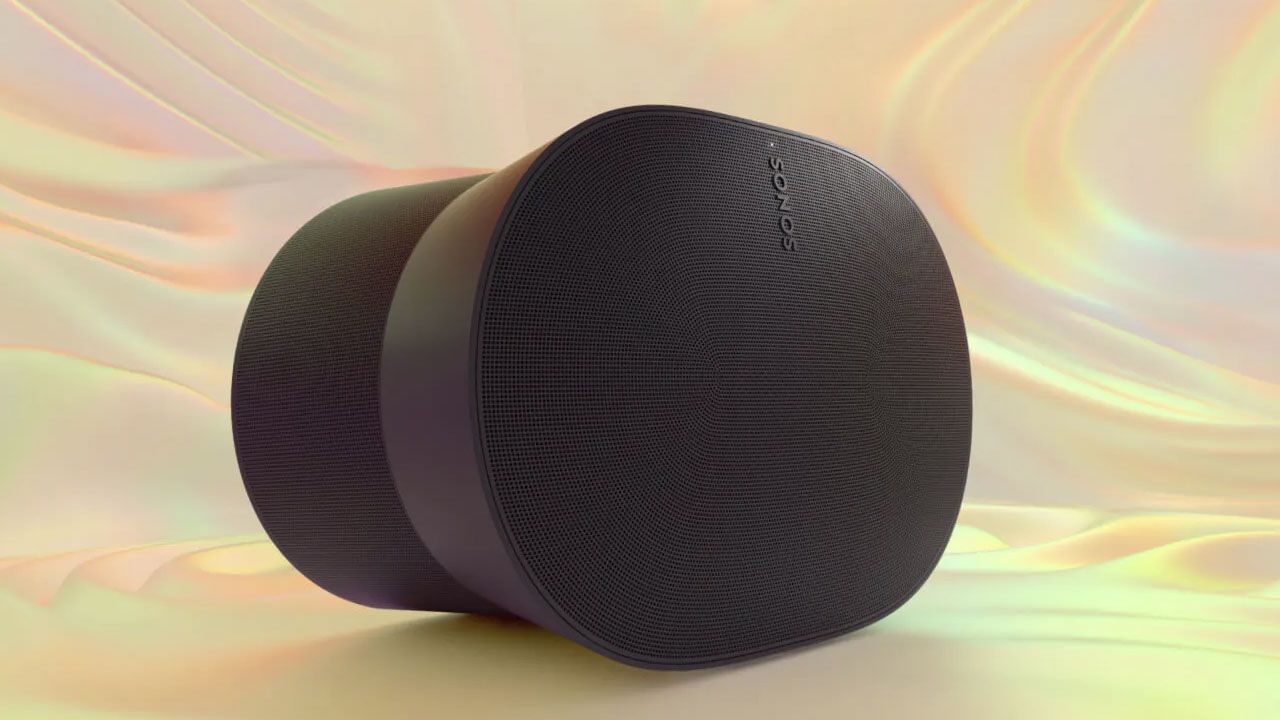

The rumors are true: Sonos has updated its range of home audio speakers in the biggest refresh of the line-up in years.
Meet the Sonos Era 300 and Era 100, a pair of wireless speakers just as at home filling your kitchen with music as they are becoming part of a surround sound movie setup.
For the most part the Sonos Era 100 and 300 will feel just like other Sonos speakers in use. They provide largely headache-free multi-room sound. And, as in more recent Sonos generations, they are also basically full-on smart speakers.
Here are five of the top things to know about Sonos’s new Era multi-room smart speakers.
1. The Era 300 has Dolby Atmos-ready audio
Sonos’s Era 300 houses a small army of speaker drivers. There’s a woofer for bass, side drivers for an expansive sound field and, freshest of the lot, a pair of upward-firing speakers.
These give — you guessed it — real height to the sound. And they allow for proper reproduction of Dolby Atmos home cinema audio when you connect your Sonos Era 300 up to a Sonos Arc or Beam Gen 2 soundbar.
Get exclusive shortlists, celebrity interviews and the best deals on the products you care about, straight to your inbox.
The smaller Era 100 doesn’t have these dedicated height channels, but can still be used as rear speakers in a home cinema array. It does have more drivers than the Sonos One, though, with two angled tweeters instead of just the one, plus a larger woofer.

2. The basics: dimensions
It’s time to get the tape measure out. The Sonos Era 100 is just a wee bit larger than the Sonos One, and is the kind of speaker you can fit on a reasonably trim shelf.
It measures 182x120x130.5mm, so you’ll ideally have 13cm of “depth” for whenever you want to plonk your Era 100. At 2.02kg it’s slightly heavier than the Sonos One too.
The Sonos Era 300 is significantly larger, at 160x260x185mm. Here the bit to look out for is the width — make sure your intended spot has at least 26cm of horizontal space. We’d recommend more too, as the Era has side-firing driver units.
Still, the Era 300 is far smaller than the Sonos Five, which is a whopping 36.4cm across. Sonos’s naming system holds up here.

3. You get Bluetooth, and line-in
Sonos speakers are great, but often pretty restrictive. The Sonos One is the most common buy among people we know, and it doesn’t have an aux input or Bluetooth.
The Era series offers both. You can use Bluetooth when you don’t want to be tied to the Sonos software, letting you hook up sources that just won’t work in the classic Sonos fashion.
Sonos doesn’t stop there either. Both Era units have a line-in, letting you plug in totally non-wireless sources like record players and ancient cassette decks.
4. This is a smart speaker
The Era series can communicate with digital assistants Amazon Alexa and Google Assistant. There are microphones on-board to listen out for commands. And they have a switch that physically cuts off the microphones, so you can be sure you’re not being listened to by one of the tech giants while you relax at home after work.
Sonos also uses the microphones for something else: Trueplay. This listens to how the speaker’s own drivers sound in the room. The mics can pick up how the audio is affected by the shape of the room and what’s inside it by analysing the reflected sound. Trueplay then alters the EQ to suit.
5. They are out soon...
The new Era family of Sonos speakers will be available from March 28. You might think of the Era 100 as a replacement for the Sonos One, the Era 300 as an alternative to the Sonos Five. However, it doesn’t actually replace the Five, and costs a bit less at £449/$449.
Sonos’s Era 100 costs £249/$249, making it a little pricier than the Sonos One, which typically sells at £199. Has Sonos just set a new standard for mainstream home audio? Quite possibly, yes.

As Content Director of Shortlist, Marc likes nothing more than to compile endless lists of an evening by candlelight. He started out life as a movie writer for numerous (now defunct) magazines and soon found himself online - editing a gaggle of gadget sites, including TechRadar, Digital Camera World and Tom's Guide UK. At Shortlist you'll find him mostly writing about movies and tech, so no change there then.